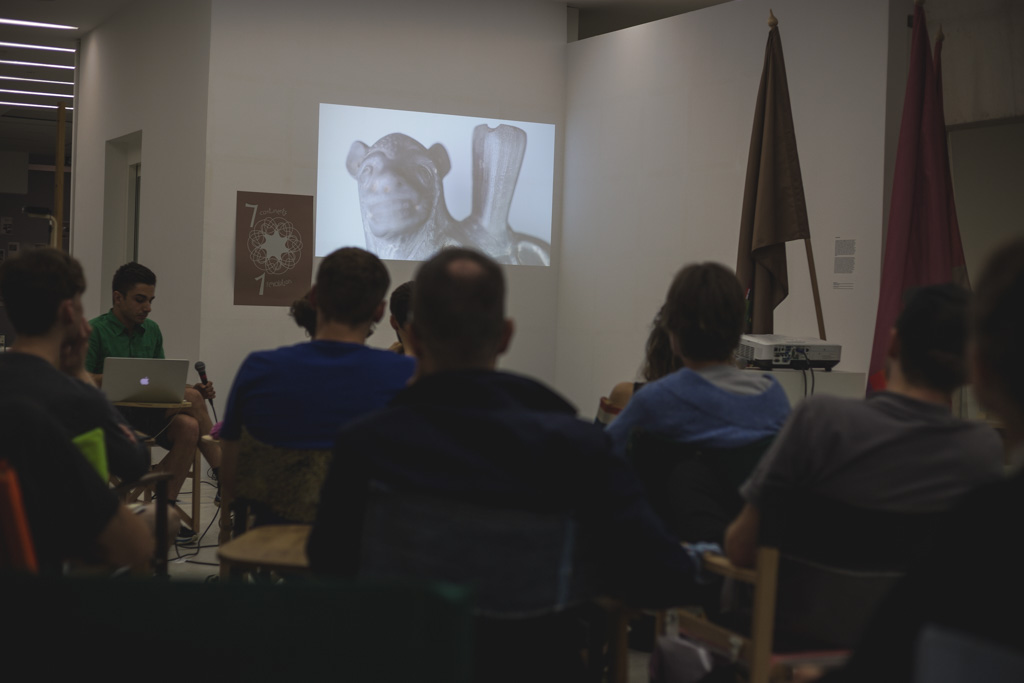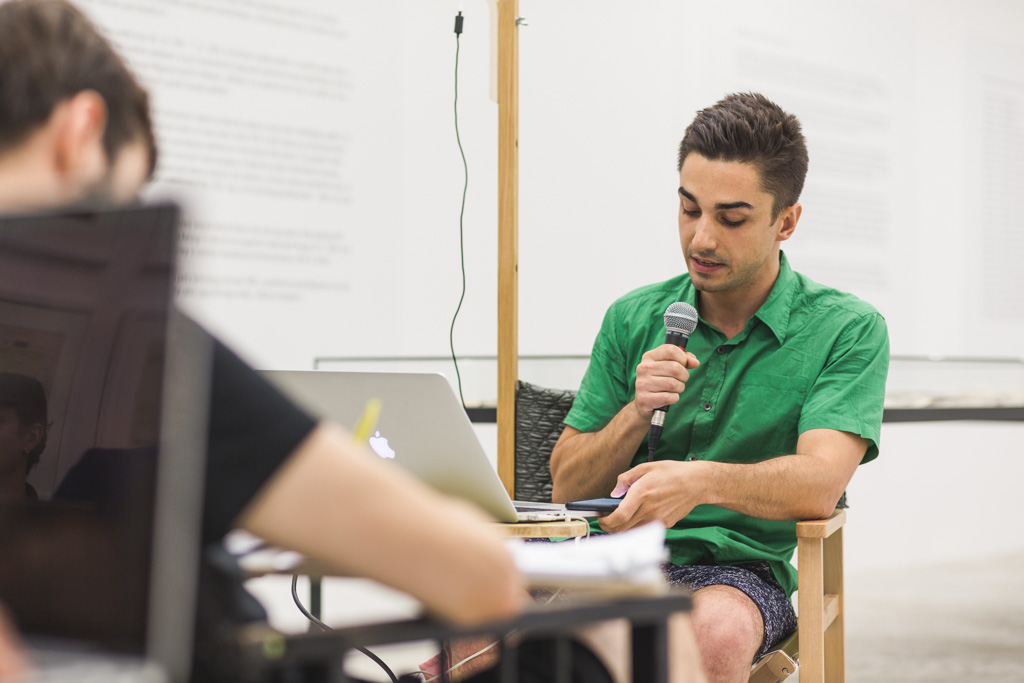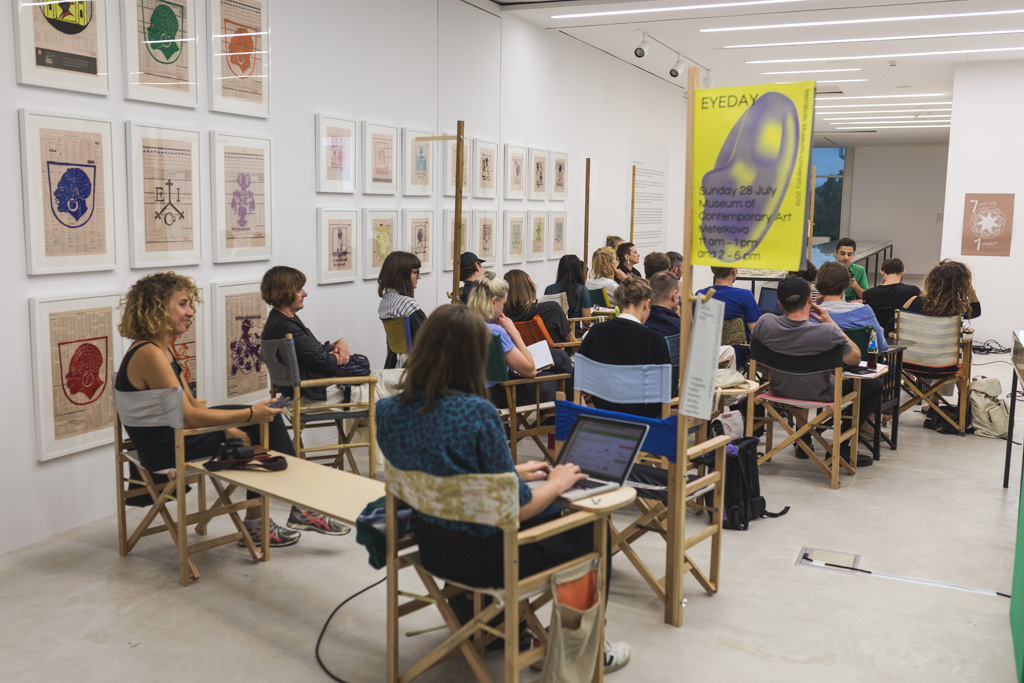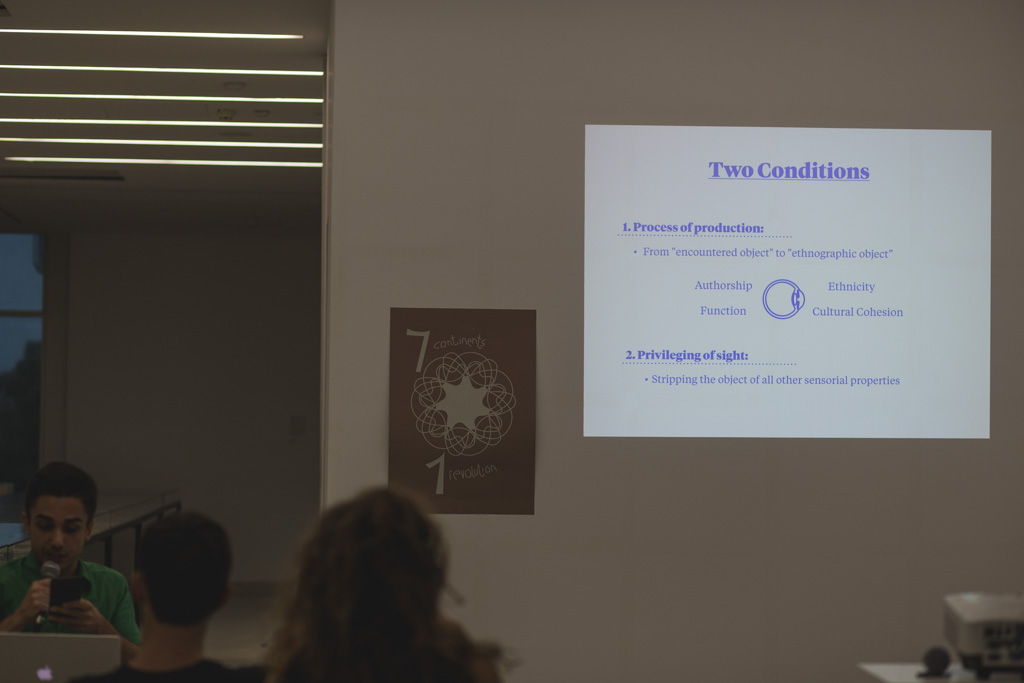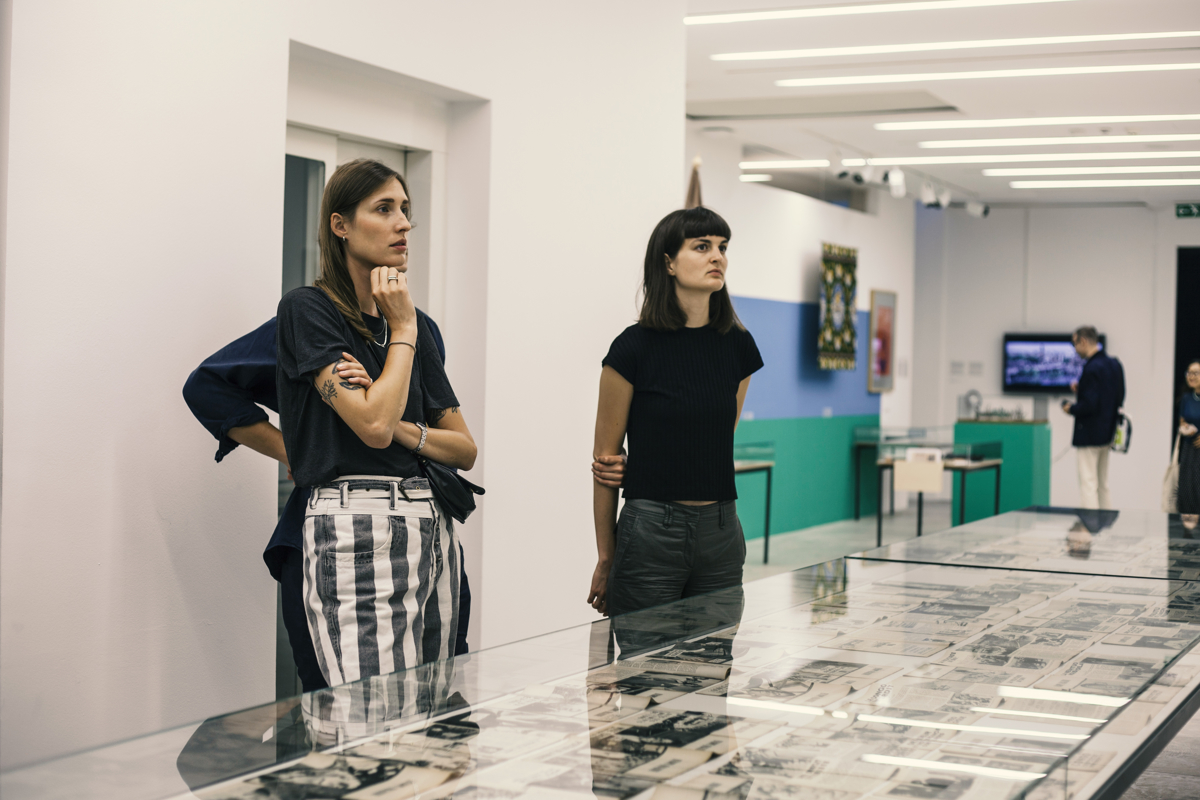Eyeday
Directed by Alexander Schindler, Felipe Meres, and Ariana Dongus with Lizzy Ellbrück
EYEDAY leads you down several paths of visual perception. Guided by Alexander Schindler, we begin with the concrete object and its two-dimensional visual representation. Then we try to sensitize ourselve to the unconscious processes of kinaesthetic perception. We find out that with acts of cognition, every object as well as its visual representation is in constant motion. It is never still but always spatial and temporal. During interactive moments, we dedicate ourselves to so-called model-based images. They are the result of intensive rendering processes of highly detailed metric measurements of spatial situations. Their appearance on our screens suggests the possibility for manifold observations of nearly endless scale and perspective. Schindler asks: are we able to abandon the directionality of the linear perspective we have become so accustomed to? Can we apprehend the extended process of ‘polyscopy’, multiplying perspectives on an object in space and recognizing it as a kinetically constructed phenomenon? For Schindler’s session we follow the path of visual perception by means of an audio guide. Participants are asked to bring their smartphones with mobile internet connection to EYEDAY.
In the second session of EYEDAY, Felipe Meres focuses on the roles that 3D scanning and hyper-realistic imaging technologies play in the documentation of ethnographic collections in museums across Europe and the U.S. While anthropologists and curators highlight the benefits that could come from the unprecedented level of access to the objects that these technologies provide, the question of what it means to submit ethnographic and ritual objects to such secular technologies remains underexplored. The process of 3D scanning ethnographic artefacts inextricably ties the objects to a net- work that includes agents not often associated with museums, such as action games with intensive graphics renderings, blockbuster films with complex CGI effects as well as tech companies that develop the graphics cards, 3D rendering software, algorithms and image-capture technologies used in the process. What are the effects of forcefully subsuming ethnographic artefacts in such hyperrealistic network of CGI and in the larger project that aims to produce a level of photo- realism never achieved before, effectively rendering the distinction between simulation and reality unattainable to the human eye?
In the final session, Ariana Dongus discusses the coded gazes of camera sensors from city surveillance to smart-phones and how these billions of images of the world have become precious raw material in an age of algorithms and artificial intelligence. She will critically investigate the evolution of techniques for identification and control, tracing the emergence of new norms that connect the historical emergence of biometric fingerprinting in the colonial and industrial age to today’s war on terror. She asks, how can we form a collective political strategy to resist the objectification of people and their rendition into suspicious subjects, dehumanized and stripped of self-agency, history, and intelligence? The lecture performance invites participants to enter a multipolar, visual landscape of object traces, biometric apparatuses, texts and archival images to take a closer look at the ‘genealogy of obsession’ to measure differences.





